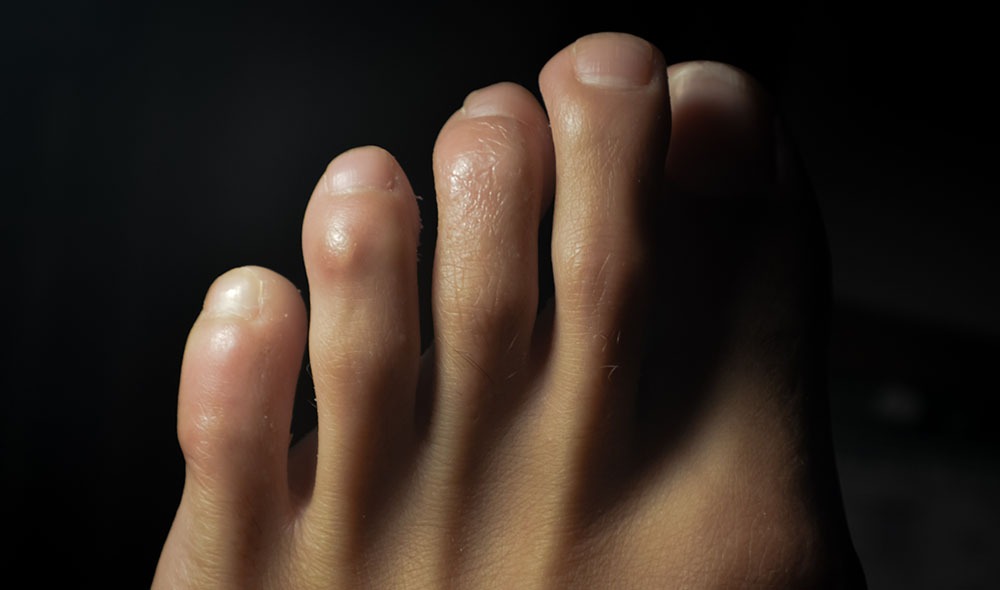6 Things You Need to Know About Hammertoe

The foot is a complex part of the body that experiences a lot of stress and helps you move from one direction to another every day. For this reason, your feet are susceptible to various conditions that may cause feet pain, numbness, and other discomforts. One of the most common causes of foot discomfort is a hammertoe.
Learn more about hammertoe, its causes, symptoms, and treatment options.
1. What is a hammertoe?
Hammertoe is a deformity caused by an imbalance in the muscles that flex and stretch the toes. This causes toe bending, which puts pressure on the top or tip of the toe in shoes. This condition can affect one of the second, third, fourth, or fifth (little) toe joints.
Hallux malleus is a condition that occurs when hammertoe develops in the big toe. You may have a hammertoe if the joint on one of your toes tips upward rather than lying flat.
2. What are the symptoms of a hammertoe?
Hammertoe is an unpleasant condition that causes both physical and aesthetic discomfort. The most common symptoms of hammertoe include:
- Rigid joint in your toe
- Pain at the top of the foot and in the ball of the feet
- Frequent corns and calluses
- Burning, redness, and inflammation in the toe joint
- Toe joint swelling
- Rarely open sores on the foot
3. What causes hammertoe?
The most common cause of the hammertoe is wearing ill-fitting or shoes that are too narrow. Wearing high heels that provide little to no arch support may also increase your risk of hammertoe. Wearing improper shoes increases the pressure on your toes and their joints, causing a deformity over time. Other possible causes of hammertoe include:
- Genes. The type of foot you were born with can make you susceptible to joint hammertoe. Flat feet might result in hammertoes as the foot tries to stabilize the arch. People with high arched feet can also develop hammertoes because the extensor tendons overpower the flexors.
- Neuromuscular disease. Neuromuscular illnesses can increase your risk of developing a hammertoe. Diabetes patients are at a higher risk of complications, because inadequate blood flow, neuropathy, infected corns, and lesions might result in the loss of a toe.
- Trauma. Rarely, but a foot or toe trauma might result in the development of hammertoe.
4. What are the hammertoe risk factors?
Certain factors can increase your risk of developing hammertoe. Being a woman makes you more likely to develop hammertoe. Besides, the risk of this condition increases with age.
The length of the toe also plays a role. If the second toe on your foot is longer than your big toe, it's a risk factor for hammertoe. Several diseases like arthritis and diabetes might also make you more prone to hammertoe.
5. How to prevent hammertoe?
Several simple lifestyle choices can help you prevent hammertoe. Be sure to wear the right-sized and comfortable shoes. A shoe with good arch support can help reduce the strain on your toe joints and reduce the risk of developing hammertoe.
Try to avoid wearing high heels too often. Heels increase the pressure on your toes joints, making you more susceptible to hammertoe. To buy the right size of shoes, try to buy them at the end of the day.
6. What are the hammertoe treatment options?
If your toe is still flexible, your doctor may advise you to wear more comfortable shoes and special shoe inserts to reduce pressure on toe joints. Shoe inserts can help realign your toe and pain. Exercises to stretch and strengthen your toe muscles may also be recommended to improve flexibility and prevent cramping.
If conservative therapies are ineffective, your doctor may recommend surgery to remove the tendon that is keeping your toe from lying flat. Rarely, the fragment of bone may be removed to straighten your toe.
Post a comment